Has it been digitised? A history of reproducing St Andrews manuscripts.
Digitisation in libraries, archives, and museums is an important way of providing wider access to collections than would be possible in person. In recent years, understandably, the demand for online access increased as travel became restricted, and researchers looked for digital surrogates. However, the process of digitisation of historical collections is delicate, labour-intensive, and expensive. In this blog we take a brief look at the history of reproducing manuscripts from the collections at St Andrews, starting in the 18th century – our current provision of alternative means of access to our material is nothing new!
James Anderson (1662-1728), historian and writer to the signet, was commissioned by the Scottish parliament to produce Diplomata Scotiae, a collection of Scottish medieval charters. As he died before the work was completed, Thomas Ruddiman took on the project and published Selectus diplomatum et numismatum Scotiae thesaurus in 1739. The book includes engravings of many early charters, including a charter by King David I once held by St Leonard’s College. The engravings were completed by John Sturt (1658-1730) and, as reported in Diplomata Scotiae, “the Engravings appears to be most exact, and the ancient Charters and Seals are very happily imitated.”
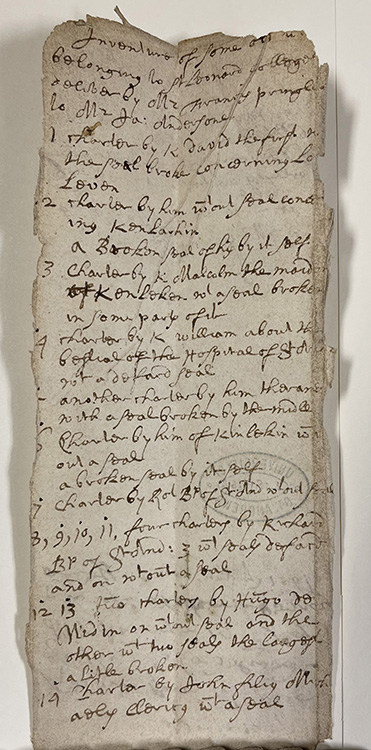
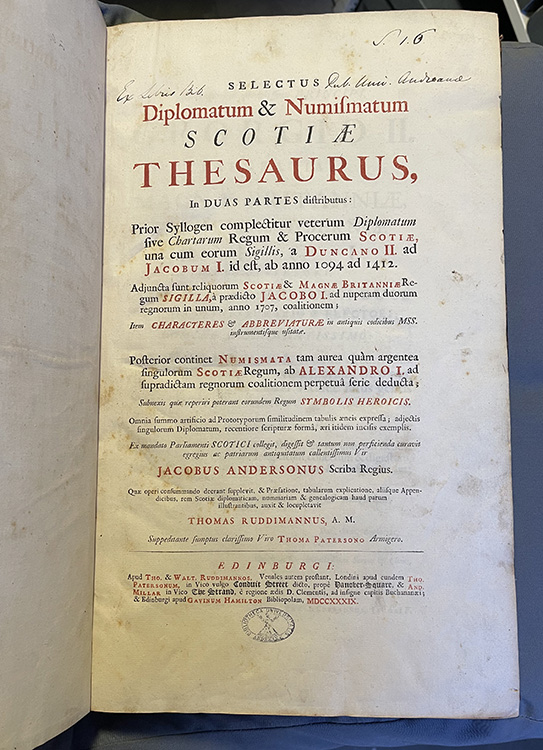
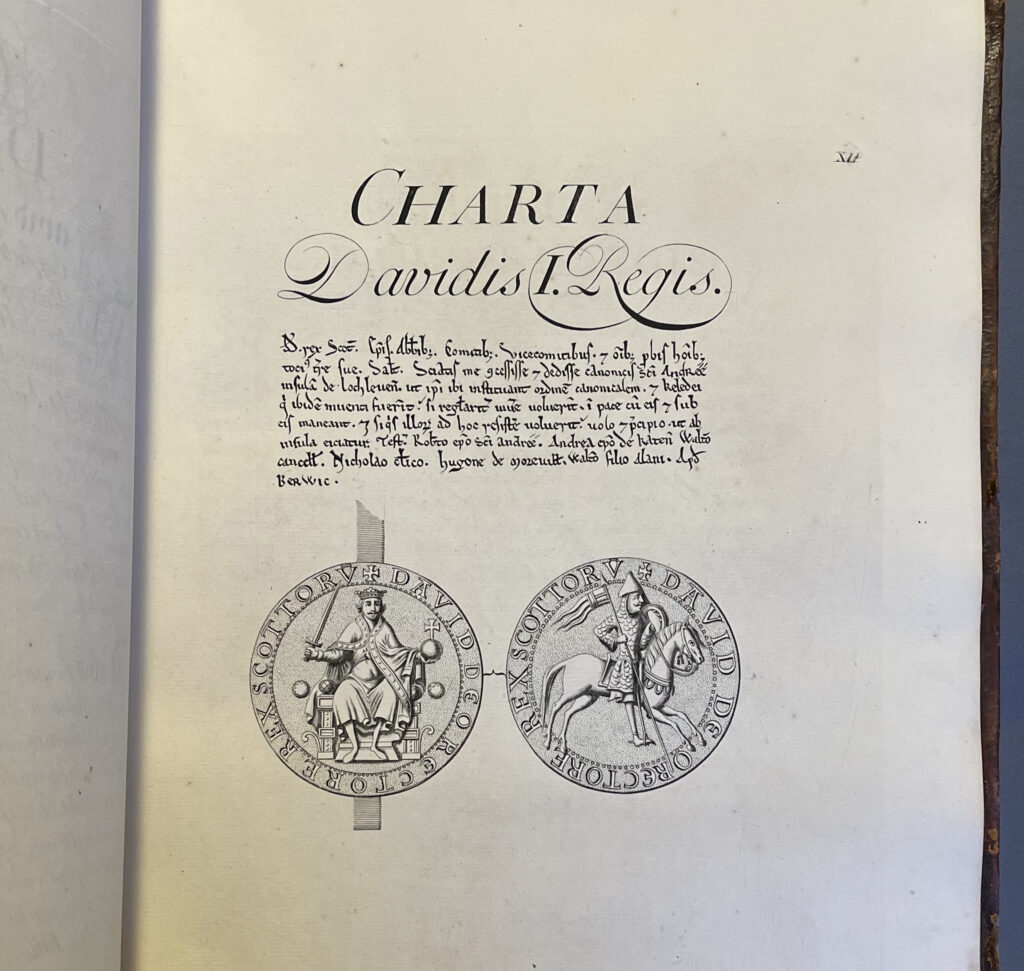
The charter shown here is from King David I granting the Island of Loch Leven to the canons of St Andrews, c.1150.[1] In the preface to Selectus diplomatum it is stated that this charter was received “ex chartophylacio Academiae S. Andreae” – a Greek term for the ecclesiastical officer in charge of archives. This particular engraving is reproduced again (without the seal) in Thomas Thomson’s edition of the St Andrews Priory register, Liber cartarum prioratus Sancti Andree in Scotia, published in 1841.
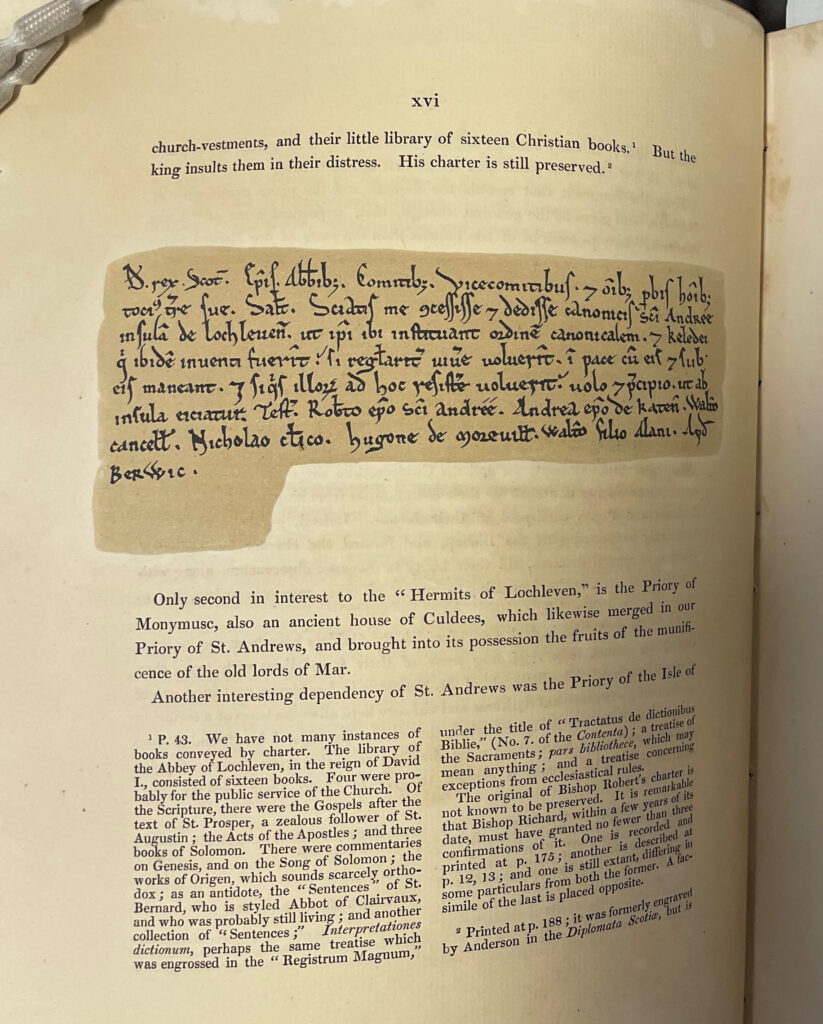
The far reach of this particular facsimile can be seen by its reappearance in a later volume of transcripts once owned by Henry Drummond MP of Albury Park, Surrey. The first few pages have a copy of this engraving pasted into the volume (msDA755.M3).
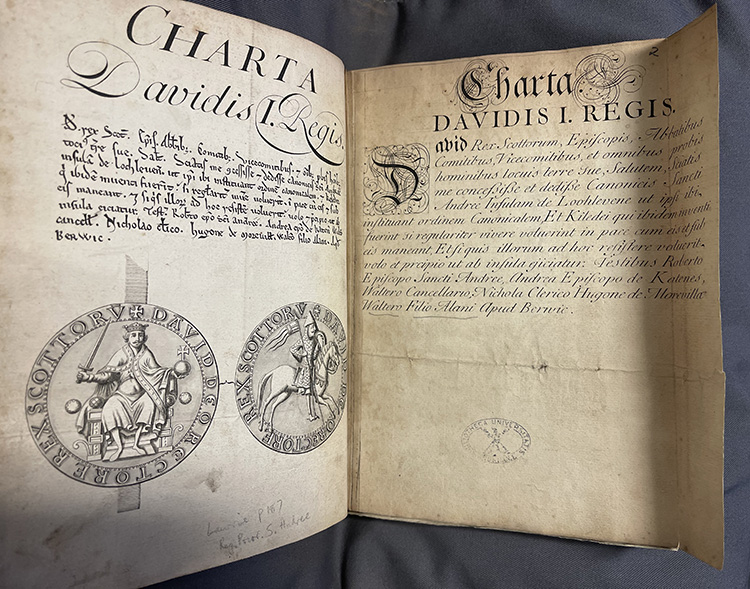
The desire to provide wider access to the nation’s historical manuscripts through facsimiles is picked up again by Joseph Robertson (1810-1866) in the 1860s. Robertson was a Scottish historian and worked at General Register House, Edinburgh. His title was Superintendent (or sometimes curator) of the Literary and Antiquarian Department.

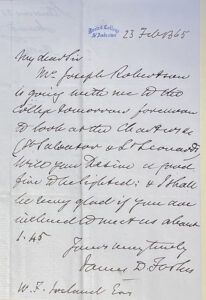
In 1865 he wrote to the University requesting a loan of the foundation bull of the University ‘with a view to its being photographed’, alongside the manuscript of Ecclesiastical Styles (now known as the St Andrews Formulare of John Lauder msBX1945.L2 (ms1720)). We know Robertson had visited the University in February 1865, as there is a letter from Principal J D Forbes to the factor W F Ireland requesting that a fire be lit in the College while they look at the charters of St Salvator’s and St Leonard’s. Please note we do not recommend consulting archives near open flames!
The foundation bull and the first page of the Faculty of Arts minutes were reproduced and published in Facsimiles of National Manuscripts of Scotland, published in three parts between 1867 and 1871.
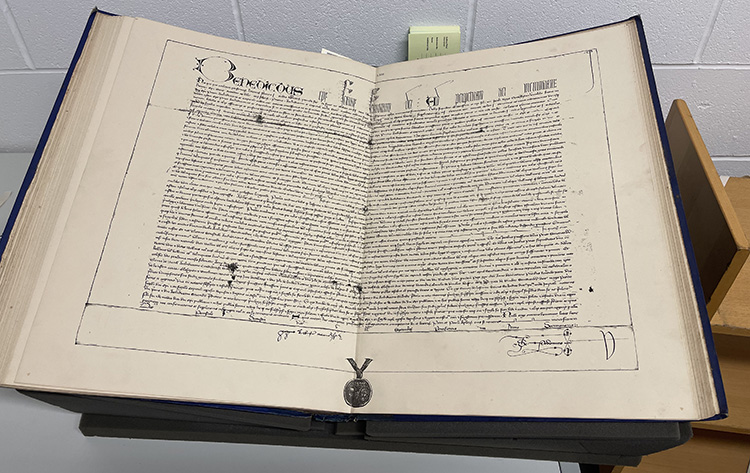
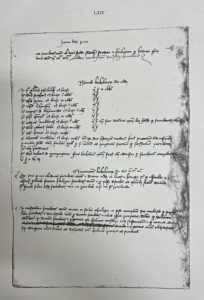
The archives of the National Records of Scotland contain letters and memoranda regarding the work on this publication. In one letter from Joseph Robertson to William Gibson Gray (19 July 1865 SRO 8/207), written from the Westminster Palace Hotel, Robertson reports that the records have been placed in the safe custody of the Public Record Office. Some of the documents required treatment before they could be photographed.
The process which was used to reproduce these manuscripts was photo-zincography, a photo process attributed to Sir Henry James (1803-1877) which was used by the Ordnance Survey to create maps in the 1850s. The process was used to create a facsimile copy of the Domesday Book, published in 1862.
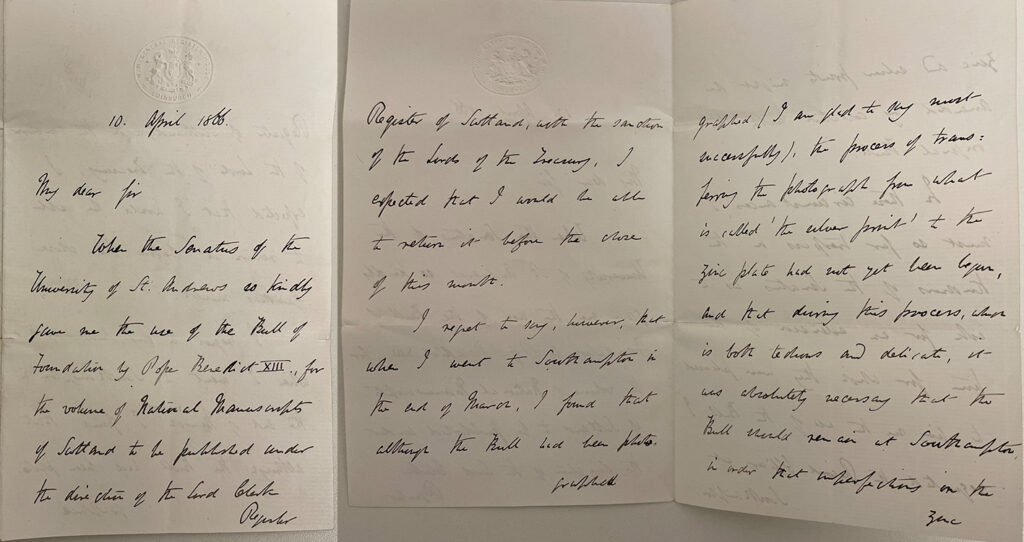
In a letter from Robertson to Principal James D Forbes, Robertson asked for an extension to the loan of the papal bull for an additional six to eight months as they needed more time to “transfer the photograph from what is called ‘the silver print’ to the zinc plate…that during this process, which is both tedious and delicate, it was absolutely necessary that the Bull would remain at Southampton in order that imperfections on the zinc and silver prints might be amended by collation with the original Bull.”
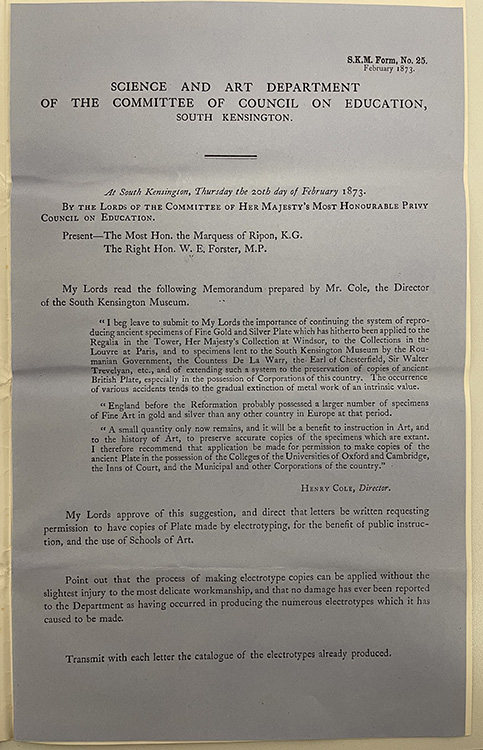
The growth of new technologies in reproduction in the 1800s also applied to objects. The Science and Art Department of the Committee of the Council of Education, South Kensington wrote to the University in 1873 requesting a loan of “ancient British plate” for the purposes of making copies through the electrotype process. The Vice Chancellor John Tulloch replied that the University would be happy to allow the copying of “ancient plate” but “they could not, however, allow the college and University Maces to be removed from St Andrews for this purpose without special agreement”. There is further copy letter in 1879 regarding the arrangements for the items selected to be delivered to Messrs Elkington, official agents of the department of Science and Art for Reproduction. While a college mace was borrowed by the South Kensington museum in 1862 for an exhibition (UYUC560/1862/25), there is no further record of any of the University’s museum collections being borrowed in 1879 for electrotyping. In recent years, University Museums have produced 3D photogrammetry models of the medieval maces.
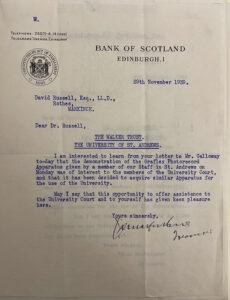
Reproduction not only provides wider access to collections, it can also be an important part of preservation. Creating surrogate copies can reduce handling of fragile originals and ensures informational content is not lost in the event of a disaster. In October 1939 as part of Air Raid precautions, which included moving the more valuable books and works of art out of St Andrews, Dr David Russell reported to University Court that there was a “satisfactory process for the reproductions of Manuscripts etc., and offered the services of his expert photographer and equipment.” Russell in the same month donated to the library “a complete outfit of photographic and projecting apparatus for the reproduction of manuscripts”. In David Russell’s personal papers there is a correspondence file relating to the selection of purchase of the equipment on behalf of the library. The Graflex Photorecord Apparatus from Kodak was chosen.
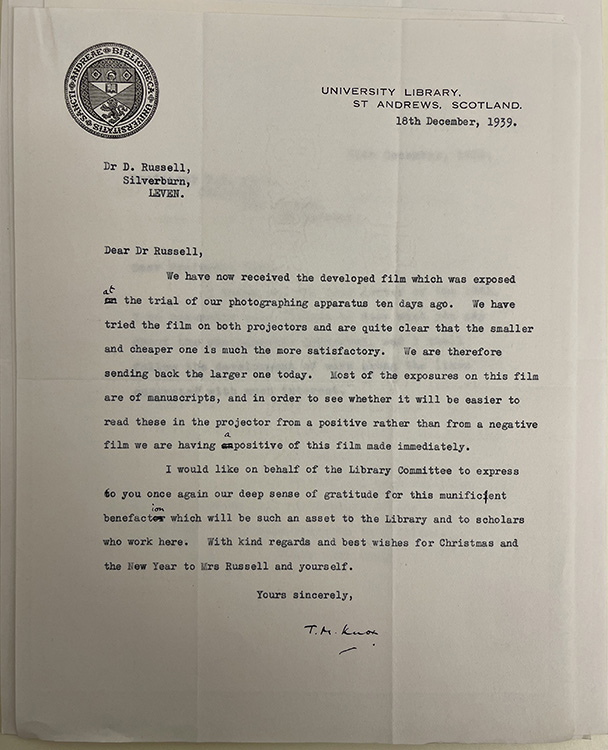
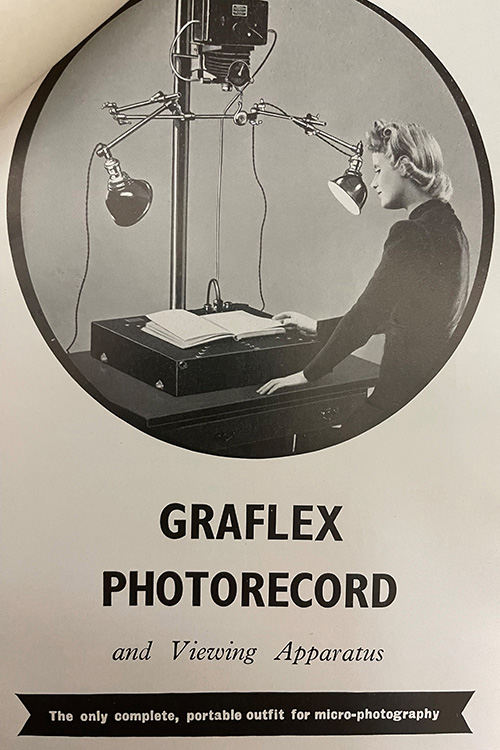
The Library Committee of January 1940 reported the plan to photograph all pre-eighteenth century muniments, and that Mr Gerrard of the physics department had completed the photography of the first volume of the Faculty of Arts minutes and three volumes of Gregory papers during the Christmas vacation. These copies are unfortunately now lost.
A new microfilm camera, the Kodak Recordak MRD2, was purchased for the Library in 1967 at the request of the Publications and Muniments committee. University Collections has a copy of the Arts Faculty minutes on microfilm, possibly photographed with this camera.
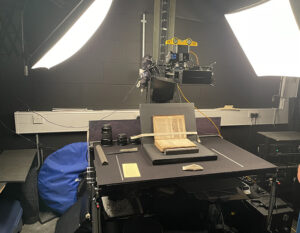
Planning documents from the Library in 2003 highlighted the need of “photocopier” for Special Collections manuscripts and rare books. From 2004, Special Collections was using its first Bookeye scanner to allow overhead scanning of our manuscripts. In the present day, University collections produces surrogates of our manuscripts and rare books with digital photography in our digitisation studio.
Too fragile to be produced in the reading room or for classes, the Faculty of Arts minutes from 1413, featured in Robertson’s National Manuscripts of Scotland, are now available in full online, and we have a high-quality digital copy of this important record in the history of the University.
Changes in reproduction technology, from the photo-zincography of the 1860s, through the microfilm copies of the 20th century and today’s digital photography, highlight the ongoing challenges in ensuring the preservation or recreation of these surrogates, as well as the originals that are captured, as technologies and formats become obsolete. Indeed, it might be argued that access to the digital is more challenging to maintain than storing the output of the 1860s.
Work is ongoing to provide online access to our collections. The minutes of Senatus from 1696 to 1920 have recently been digitised and uploaded to the Collections site, as have many of our other core University records. We hope that they will be widely used in research.
Sarah Rodriguez
Assistant Archivist (Modern Records)
[1] Transcript included in Early Scottish Charters prior to A.D. 1153 by Archibald Campbell Lawrie, p.187.
